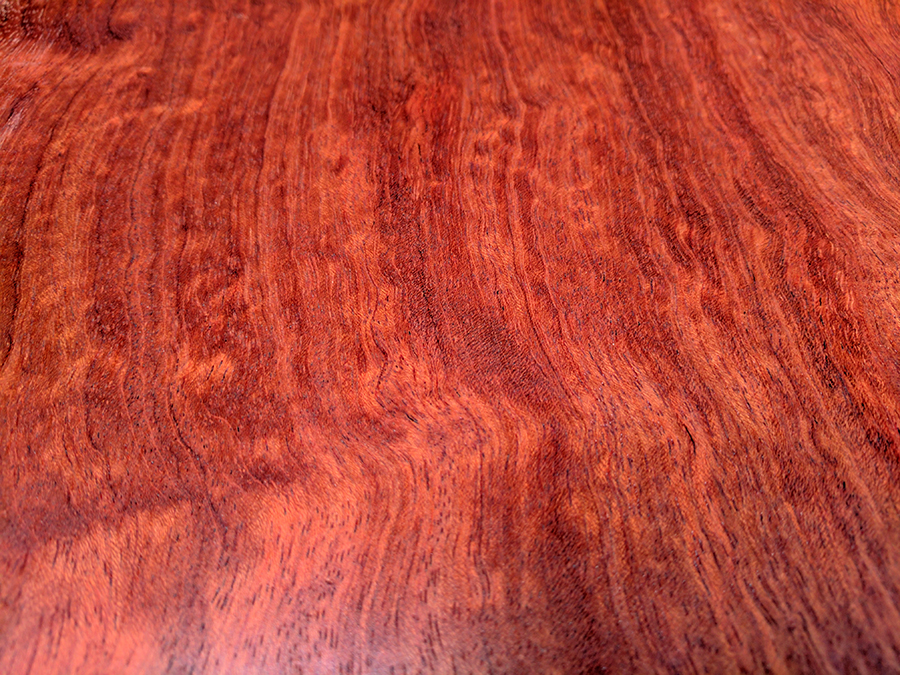BUBINGA
Bubinga wood has a commanding presence, be it in its weighty boardroom tables or in its delicately figured turning squares. This beautiful reddish-brown wood is quite versatile – it is used for high-class furniture and cabinetry, one-piece dining and conference tables, interior and architectural work, and fancy, decorative items. Many luthiers recommend Bubinga for acoustic and electric guitar sets.
Bubinga is native to the forests of West Africa, mainly Cameroon and Gabon. Bubinga is in the Guibourtia genus - other woods in Guibourtia include Benge, Mutenye, and Shedua. Also called African Rosewood and Kevazingo, Bubinga is a medium to very large tree. It is not unusual to find trees free of branches up to 100 feet and with diameters up to nine feet above the swell of the buttressed root system. The tree's bark is rather thick and easily separates from the sapwood.
The heartwood is pinkish-red to brownish-red with a fine purplish striping and is in strong contrast to the light straw-colored sapwood, which is usually 4-6" wide. The grain is usually straight and interlocked but in some logs the grain is very irregular, producing highly figured veneers and lumber. Common figures are pomelle, curly, ribbon-stripe, quilted, cat's-eye, and in rare instances a combination of these figures is found in the same log or lumber. These figures can produce a three-dimensionality when finely finished. The heartwood is fairly hard and heavy with a dried weight of 50-58 lbs. per cubic foot.
Care needs to be taken when planing and molding Bubinga to prevent grain tear-out. It glues well with a wide range of adhesives. The wood is capable of taking an extremely fine polish. The main defect found in this species is caused by the large size of the logs. If the logs are improperly felled or if buffeted by strong winds, sometimes the wood develops fractures of varying sizes. Sometimes they are so small they don't become evident until the final finish.
Gilmer Wood Company stocks Bubinga in 1", 1 ¼", 1 ½", 2", 3", 4", 5", & 6" lumber and sawn timbers of 6 x 8", 8 x 8", and 12 x 12". Small turning squares and bowl blanks are also available as are wide boards up to 65" wide for one-piece table tops. Wide, quartersawn material for instrument backs is always available.
In late September 2016 at the CITES (Convention on International Trade in Endangered Species) conference, Bubinga was given enhanced protection by being granted Appendix II qualification. This means trade of Bubinga will be highly regulated beginning January 2017.

